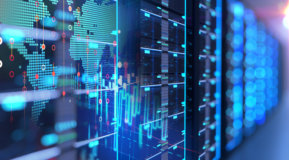
Each and every day, digital transformation introduces new workloads that IT must effectively deliver to employees, customers, and other users. Application teams continue to adopt DevOps and other agile methodologies to build and deploy these new applications faster while also ensuring higher quality of code and a superior user experience.
This puts network infrastructure and operations teams in a delicate spot. On the one hand, they must ensure the network continues to be stable, secure, and performs well, just as they’ve always done. But on the other hand, they must also be more responsive to support the new requirements of each incremental application.
Most IT organizations are in the process of modernizing their networks so they can become more adaptable and flexible. Having a network that is architected around cloud-native principles is key to achieving this level of agility and efficiency.
What do we mean by cloud native?
Most often, cloud native is associated with modern applications that run inside containers. Or, more broadly, we think of where those apps run: in the cloud.
At Aruba, we think that cloud native describes how any software package is built, and the term has some interesting implications for today’s networks.
In fact, cloud-native principles drove the development of AOS-CX, our modern network operating system. It’s a powerful piece of cloud-native software that just happens to ship in our Aruba CX switches.
Let’s use Gartner’s four principles of cloud-native infrastructure as a backdrop for more context.
Principle 1: Modularity
According to Gartner, modularity “provides abstractions for independent packaging of services.” This reflects what we’ve come to associate with modern software development, where applications are broken into microservices and other smaller, independent components that are easier to update, deploy, and manage.
By using microservices, software developers can work on their feature set independently, without worrying about breaking anything.
AOS-CX is very similar. It’s based on a database-driven, microservices architecture, where every function or module operates independently. In this manner, AOS-CX is based on a publish-subscribe (pub-sub) model, where every software module records its status in the state database. This means there is no direct communication between modules.
Why is this important for our customers? Well, much like DevOps, modularity as a design principle allows us to introduce new or updated features with higher velocity and better quality. We don’t have to spend an inordinate amount of time making sure new features won’t break something else that’s already in the operating system, because there are little to no dependencies between software modules.

Principle 2: Resiliency
Modularity goes hand-in-hand with the second cloud-native principle: resiliency, which Gartner defines as services that “are loosely coupled units that are independent and fault-tolerant.”
Now, network resiliency is hardly a new requirement. But you can argue that in the era of digital business, it’s even more imperative. Just imagine the dollars that an online retailer would lose during Cyber Monday if its network core goes down for even a few minutes.
AOS-CX, as an operating system, provides the foundation for ensuring always-on availability. Decoupling communication between software processes leads to better system performance and reliability. Should a process crash, the impact of that failure is limited. The process automatically restarts, accesses the state database, and quickly restores the switch to full operation.
AOS-CX also makes Aruba’s Virtual Switching Extension (VSX) technology possible. VSX is a robust, yet simple solution for high availability with an architecture that is redundant in both hardware and software. This includes support for live upgrades of switch software, ensuring the highest levels of availability, even during maintenance windows.
Principle 3: Programmability
Our third cloud-native principle is programmability, or supporting “provisioning and management via declarative APIs and policies” as Gartner defines it.
For networking teams, ease of programmability is key, as teams are often short-staffed or without dedicated development resources. Unfortunately, IT team can struggle with custom programming due to limitations in network equipment.
AOS-CX and Aruba CX switches were, in contrast, designed with ease of use in mind. On top of the state database in AOS-CX are RESTful APIs, enabling IT operators to tightly integrate network infrastructure and state information with third-party platforms. This helps operators streamline workflows that extend across multiple systems, as well as those that are managed by multiple teams.
With AOS-CX, the question is no longer, “what can I program?” It’s now “how can I program it?” And we’ve made programming simple for customers via a powerful Python framework available on GitHub, and we’ve also created a robust solution exchange where industry peers and experts can collaborate on additional custom solutions.
Principle 4: Elasticity
The final principle is elasticity—"resources can be scaled up and down dynamically in an automated and policy-driven manner using orchestrators.”
Many IT teams are using orchestration frameworks, such as Red Hat Ansible, to automate workflows, an approach that is especially useful in multi-vendor networking environments. Aruba is supporting these frameworks by providing a collection of fully-tested Ansible modules to automate the administration of CX switches.
A bonus thought on the concept of elasticity: AOS-CX is a highly flexible operating system that can support any use case from the access layer at the edge, through the core, and into data centers. For example, AOS-CX powers a 1U access switch, as well as modular chassis switches in data centers. It’s flexibility that comes without any performance tradeoffs while offering the same operational experience for network operators.
Put cloud-native principles into practice with Aruba CX
Analytics, automation, and always-on availability must be focal points of any modernized networking strategy. When combined with cutting-edge hardware from the Aruba CX switching portfolio, AOS-CX and its cloud-native design principles deliver the intelligence, simplicity, and reliability today’s network operators need.
Additional Reading
AOS-CX: A Modern, Programmable Network for Mobile and IoT
Network Automation and Analytics Abound: Enhance the Operator Experience with Aruba CX




